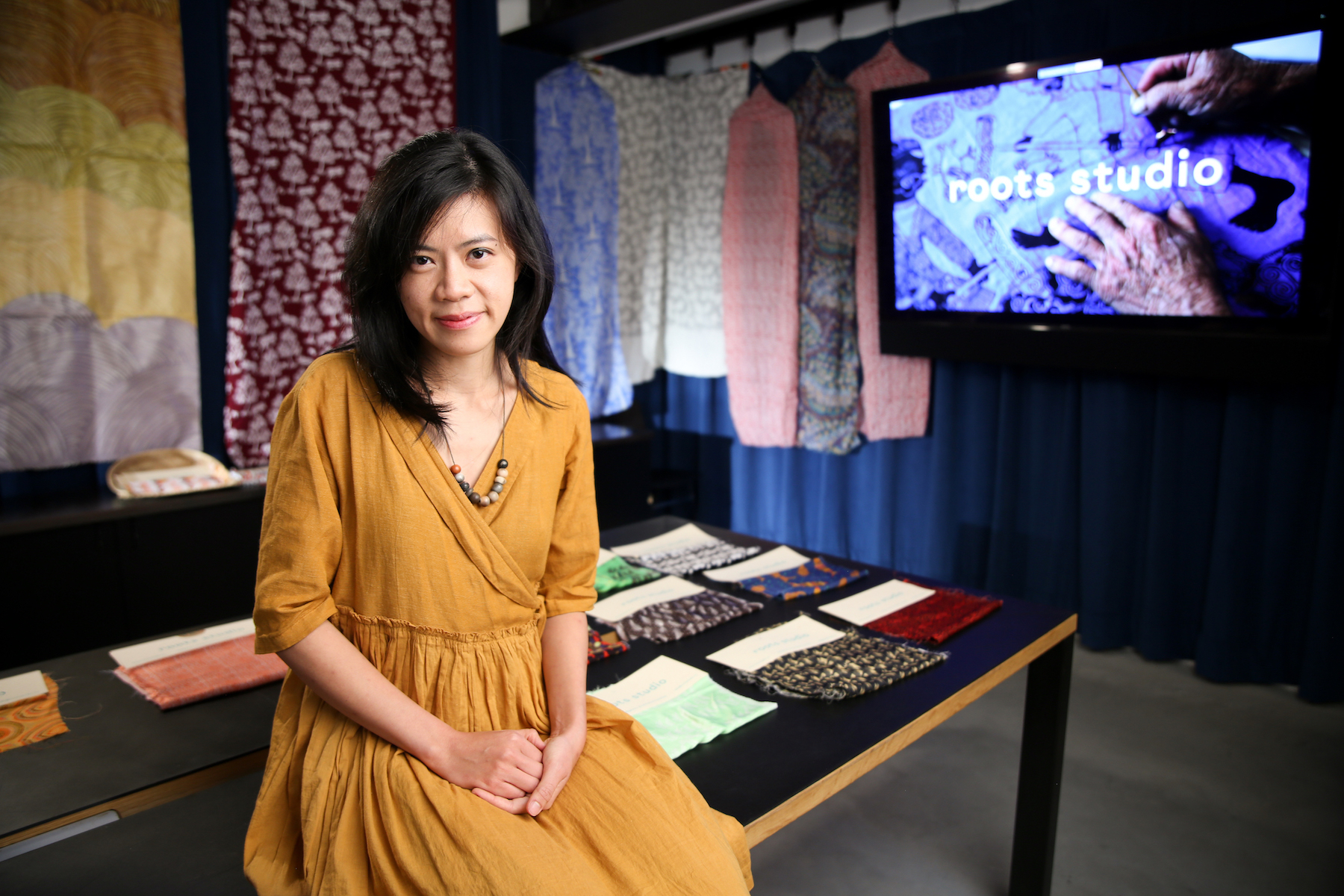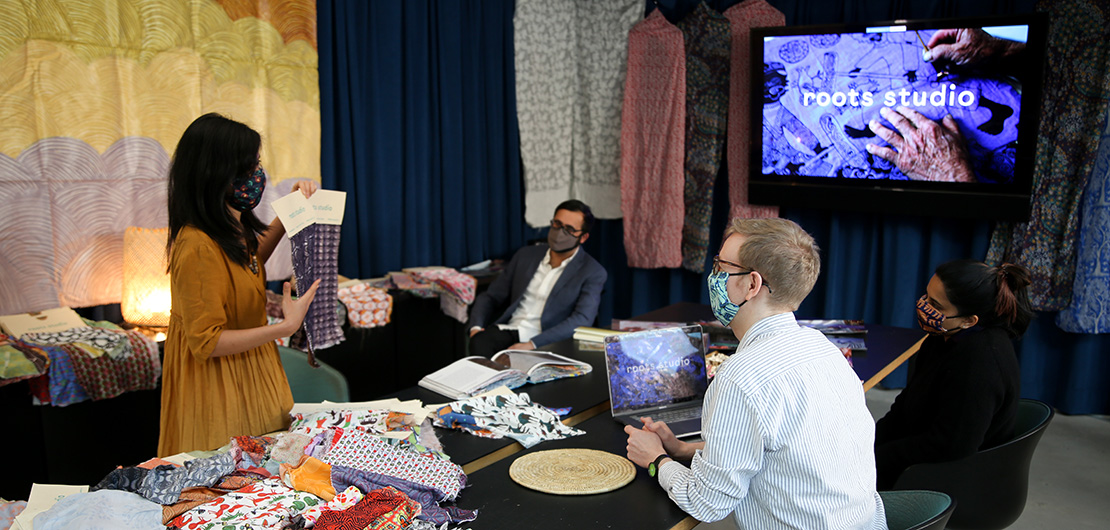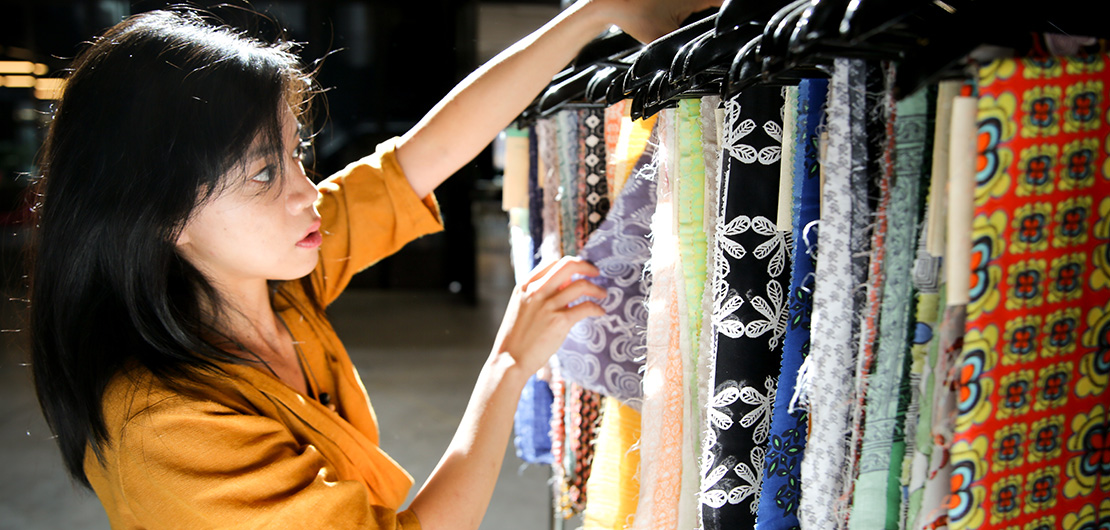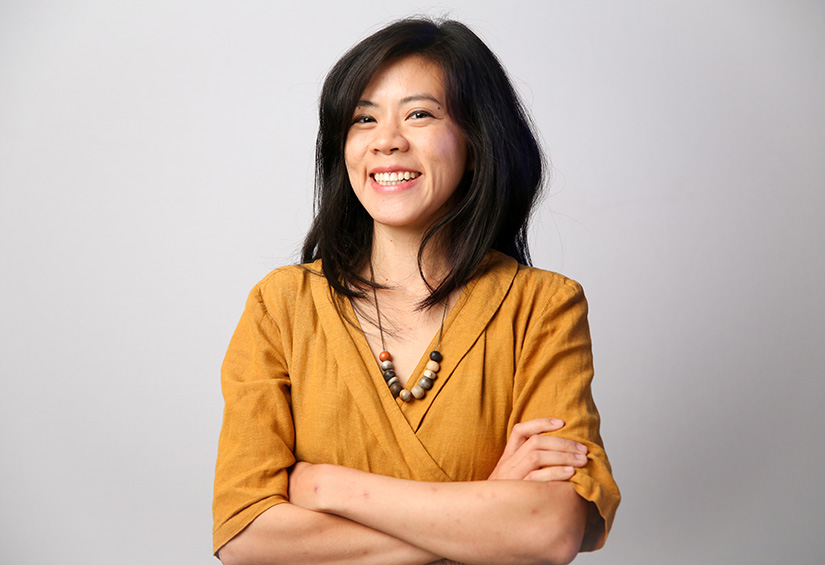
As climate change and the Internet-driven market economy force Indigenous groups to migrate to big cities, the time-honored crafts by women artisans lack a financially sustainable outlet. Enter Roots Studio, Rebecca Hui’s New York-based start-up that aims to develop the “prosperous village,” where traditional designs are appropriately valued commercially. Her goal? Ending the exploitative cycle of Western cultural appropriation, and instead returning the proper respect and credit to Indigenous makers. Roots Studio digitizes then transforms artworks into new forms, enabling them to be licensed in a digital library; the integrity of these cultural works are then protected.
Hui is one of eight recipients of the recently announced 2021 Cartier Women’s Initiative, which honors and supports female entrepreneurs and their projects with a $100,000 prize as part of the foundation’s 2021 theme, “The Ripple Effect.” Cultured spoke to Hui about her background in urban planning, the impact of the CWI prize and the multidisciplinary future of Roots Studio.
Liza Mullett: How did Roots Studio begin?
Rebecca Hui: I’ve been working with Indigenous and minority communities globally for the last decade with a focus on Asia. Often when people think about rural communities, they think about poverty, lack of infrastructure and poor education. However, what I saw were highly creative and bold individuals. But with unstable farming income, villagers leave their communities to become migrant laborers in cities, obscuring their artistic potential and voice. Most communities are often discriminated against in the mainland, and they lose that confidence in their voice and a piece of their identity.
Simultaneously, the urban world finds itself craving sustainability, community and provenance. No wonder there is such a huge rise in organic hippie labels. Yet without the packaging, these are values that Indigenous communities have held for generations. Why not bring these communities to be contributors for these collaborations? Cultural loss cannot be prevented simply from anthropological documentation. We have to see culture as dynamically held by communities with evolving needs and values and create solutions to evolve with those needs. Roots Studio forms consensual and financially sustainable bridges between communities and global fashion to create more beauty and wonder.

LM: How would you explain the intersection between urban studies and supporting Indigenous arts and craftsmanship?
RH: When people think about urban planning, they think of cities structured with dense transit systems, rent, labor markets, etc. Yet half of the world still lives in rural areas, surviving on subsistence connected to the land. The rural relationship with materiality is profoundly different than urban. You don’t just buy clothes at a store; they are created and passed down.
But, these communities aren’t static and should not be held in nostalgia. The in-between of the urban and rural is the “rurban”—not suburbia, but villages meeting glassy buildings. The rurban, to me, is the least understood by urban planners, yet it encompasses the transformation that many villages are undergoing. When I left college, I mapped cows in India and saw how human relationships with cows changed from rural to urban. Then, I was a cartographer for the Government of India to help define the rurban as a classification for better, more effective policy and resource allocation in this in-between.
Roots Studio emerged as a solution realizing that there is a way to create the idea of a prosperous village. We monetize the cultural skills and assets that already exist in the village, create design and creative upskilling, to evade the racial discrimination minority communities face when they leave their homes.
LM: How does Roots Studio seek to combat cultural appropriation, exploitation and misuse of important cultural practice and design?
RH: We are in a culture full of accusation with little space for redemption. I have felt all the pain in my heart too. But avoiding the discussion only ensures that appropriation will take place and that the world will succumb to a dominant and ultimately boring aesthetic. Transposing a pattern drawn by an artist in rural India onto a garment designed in downtown Manhattan isn’t necessarily appropriation. Many heritage artists are eager to share their art with the world. And they are eager for the income, international exposure and design exchange to sustain their practice. True cultural appropriation is founded on power imbalances from a history of the lack of authorship, consent and compensation. If we can create a two-way bridge with those elements, we can pave a way to share cultures more equitably and beautifully. Rather than exploitation, design and fashion can once again be a form of diplomacy and a megaphone for inspiration and global style.

That’s the bridge we create at Roots Studio. Through a decade of experience working with Indigenous communities, we can move together in a new mode of cultural preservation that rebalances power and creates a more imaginative world.
LM: What do you think has been the biggest challenge in creating Roots Studio and getting it off the ground?
RH: A globalized, Internet-driven world should mean more diversity, but why does it seem like the world is more siloed than ever? The challenge about bridging is to ensure there is curiosity, compassion and respect across all people we work with, whether it is a villager from interior Guizhou in China or an American from Phoenix, Arizona.
Yet, diversity in the Western world has been weighted with guilt and fear. I’ve heard a lot of, “Oh no, we are lacking people in our company who look like X, Y, Z.” Awareness is important, but fear makes us think of diversity as a checkbox, something to do to avoid criticism, rather than an opportunity to realize that our world and lives are enhanced because of cultural exchange. Diversity happens when we are genuinely curious about people from other walks of life, spend time getting to know them, and give them positions of power they deserve. My favorite part about building Roots Studio is showing the universal humanity across the world through compassion and curiosity—even if we look different, come from different geographies, cultures, languages and practices. It is our cultural distinctions and uniqueness that makes the world more beautiful.
LM: Congratulations on receiving the Cartier Women’s Initiative Award! Moving forward, how will that kind of recognition and support benefit Roots Studio? How do you see it impacting the future of the company?
RH: It’s been amazing to be alongside the Cartier Women’s Initiative family and their community of brilliant women. Their work speaks for itself. It has already created a lot of pathways for us forward, especially focusing on the fashion and retail industry. Having an association with Cartier helps us elevate the work of our artists and validates years of heart and hard work.

LM: Where do you see Roots Studio in ten years? How do you want it to change the typical marketplace we see today?
RH: It’s about harnessing the creative brilliance and potential of untold artists and heritage in multi-dimensional formats and bridging them to creatives globally to create consensual and collaborative magic not possible before. We are not just stopping at fashion. I can’t quite speak about what we’re cooking up in our studio just yet, but I’m excited.
Craving more culture? Sign up to receive the Cultured newsletter, a biweekly guide to what’s new and what’s next in art, architecture, design and more.










 in your life?
in your life?

